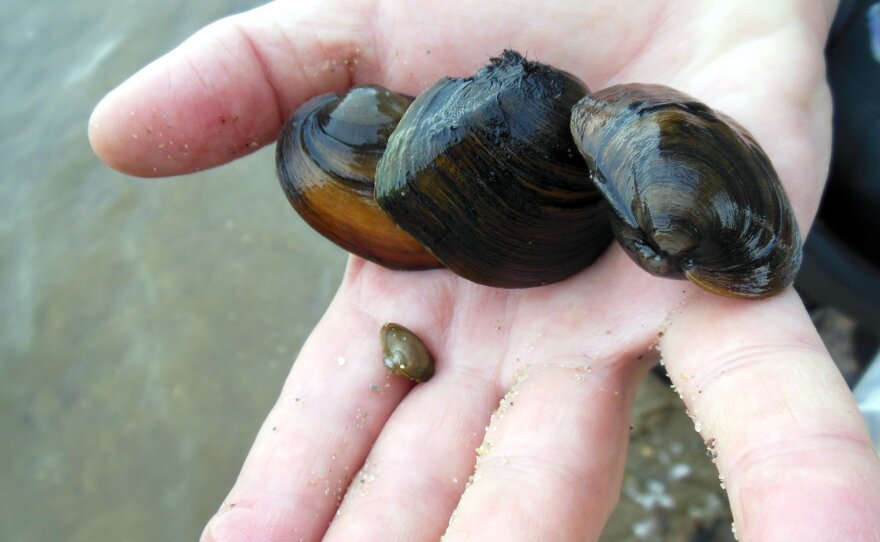North America has the most diverse population of freshwater mussels in the world. There are roughly 300 species. But almost 40 have gone extinct in recent history. The presence of one kind of endangered freshwater musselis delaying projects to restore parts of the Grand River in West Michigan.
To find out more, I meet up with Heidi Dunn and her two-man crewat Riverside Park in Grand Rapids. They’re hunting for a beloved endangered animal - well, an endangered mussel – that Dunn loves.
“They’re not the charismatic megafauna. You know, like eagles and bears and other things like that. These are not warm cuddly fuzzies. They’re biological rocks,” Dunn said.
Dunn’s crew wades around in a slow moving section of the Grand River. They crawl around on all fours in their wetsuits, feeling for mussels in the sandy river bottom.
They bring what they find on shore. Dunn tallies up the critters. They’ve got real goofy names.
“What we’ve found here so far here is threeridges, pigtoes, pocketbooks, pimplebacks,” she says.
Mussels like these are great for river ecosystems because they help filter the water. A century ago, people caught mussels here and sold them to make into buttons. But Dunn says dams and pollution have trashed habitat for many freshwater mussels – including the snuffbox – the one they’re hunting for today.
“All right, now I was just telling you that I didn’t think we’d find a snuffbox and here is a snuffbox. It’s a freshly dead one. But that is a snuffbox – a male,” she says.
The open snuffbox shell is about an inch long. It’s triangle shaped; yellowish with dark markings on the edge. In the course of the team’s 17 day search, they uncovered only five living snuffbox mussels. But that’s enough to slow down a massive project to restore the “grand rapids” back into the Grand River that gave Michigan’s second largest city its name.
Chip Richards is one of the founders of Grand Rapids Whitewater, the group behind the proposed project. He expected bumps in the road, but didn’t see this one coming.
“Well, it was a little bit of a surprise. We thought that our only real constraint was the sea lamprey, flooding, maybe ice jams. And then we got a heads up that the feds might be listing this snuffbox mussel as an endangered species and sure enough, in 2012 they did,” he says.
Now the whitewater project will have to wait on a special assessment of the snuffbox population in the area. And they’ll have to make a plan to avoid putting the animals in harm’s way.
The same thing will have to happen for another project. The Lyons dam upstream in the Grand River would’ve probably already been removed if it weren’t for the discovery of the snuffbox mussel there too. All of the surveying and planning raises the cost of these projects. Plus Richards says it’s going to take more time.
“It’s good to find the snuffbox mussels though because they’re an indicator species. They tell you that the water quality is good. If you have a snuffbox mussel in your watershed that means good things for your river,” he says.
Richards won’t have a complete report from Heidi Dunn’s mussel hunting team until the spring. Even after that, the roughly $27 million Grand Rapids whitewater project won’t be complete for at least a few years.
Snuffbox mussels have very interesting breeding habits. Check out Missouri State University's Professor Christopher Barhhart's awesome videos here.
















